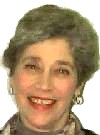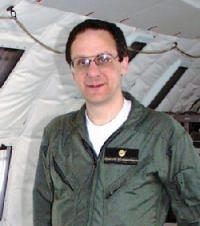
|
The Mathematical Association of America Maryland-District of Columbia-Virginia Section |
- Home
- History
- Main History Page
- Section History Document
- List of Past Officers
- Charter Members
- African-American Participation
- Stories from Section Members
- Section NExT Fellows
- Obituaries
- Smith Award Recipients
- Christensen Award Recipients
- Meritorious Service Award Recipients
- Undergraduate Award Winners
- Meeting Archive
- Past Meetings
- Talk Archive
- Old Section NExT Programs
- Newsletter Archive
- Meeting Minutes Archive
- Miscellaneous Documents
- Meetings
- Minutes
- Fall 2024 Executive
- Fall 2024 Membership
- Spring 2024 Executive
- Spring 2024 Membership
- Fall 2023 Executive
- Fall 2023 Membership
- Spring 2023 Executive
- Spring 2023 Membership
- Fall 2022 Executive
- Fall 2022 Membership
- Spring 2022 Executive
- Spring 2022 Membership
- Fall 2021 Executive
- Fall 2021 Membership
- Spring 2021 Executive
- Spring 2021 Membership
- Fall 2020 Executive
- Fall 2020 Membership
- Fall 2019 Executive
- Fall 2019 Membership
- Spring 2019 Executive
- Spring 2019 Membership
- Fall 2018 Executive
- Fall 2018 Membership
- Spring 2018 Executive
- Spring 2018 Membership
- Fall 2017 Executive
- Fall 2017 Membership
- Spring 2017 Executive
- Spring 2017 Membership
- Minutes Archive
- Newsletters
- Section NExT
- Awards
- Students
- Links
- Search
Fall 2002 Meeting at the University of Maryland in College Park
The fall meeting of the MD/DC/VA Section of the MAA was held on November 1 and 2 at the University of Maryland in College Park, MD.
Invited Addresses
Martha SiegelSecretary of the MAA, Professor and Chairperson, Mathematics Department, Towson UniversityBanquet Address: Wanna Bet?: Curiosities in Probability Abstract: Several years ago, "Ask Marilyn" exposed a simple probability problem to the community at large. Even the mathematicians got it wrong! From early times, gamblers have sought ways of determining odds and settling bets. Where are the pitfalls? This talk will expose some of the assumptions and miscalculations that lead to solutions that may seem intuitively correct, but don't bet on them! Biographical Sketch: Martha Siegel studied mathematics as an undergraduate at Russell Sage College in New York and attended Rensselaer Polytechnic Institute as a special student during her years at Sage. Siegel earned her Ph.D. from the University of Rochester in 1969. She taught at Goucher College in Baltimore from 1966 to 1971 and since then has been a faculty member at Towson University. Her mathematical interests are in the areas of probability, applied mathematics, and modeling. Siegel, the current MAA Secretary, has been very active with the MAA for years. In addition to serving as Editor of the MAA Mathematics Magazine for five years in the 1990s, she has served on various MAA committees, served on the MAA Consultants list for years, and is experienced as a program reviewer. Siegel is a founding member of the Maryland Mathematics and Science Coalition. 
Roger HornProfessor, Mathematics Department, University of Utah Past American Mathematical Monthly EditorInvited Address: Five Fundamental Facts in Matrix Analysis Abstract/Assignment: Bring to the talk a short list of key facts about matrices that you emphasize when you teach linear algebra. The speaker will do the same, illustrated with examples and applications. Biographical Sketch: Roger Horn studied mathematics and physics as an undergraduate at Cornell University and earned his Ph.D. in mathematics at Stanford University in 1967 under the direction of Donald Spencer and Charles Loewner. He has been a faculty member at the University of Santa Clara, Johns Hopkins University (where he was chairman of the Department of Mathematical Sciences during 1972-79), the University of Maryland Baltimore County, and the University of Utah. His published papers reflect research in number theory, differential geometry, probability, health policy analysis, statistics, analysis, complex variables, and matrix analysis. 
Edward ScheinermanProfessor and Chair, Mathematical Sciences Department, Johns Hopkins UniversityInvited Address: When Close Enough is Close Enough Abstract/Assignment: A former doctoral student, Greg Levin, in his dissertation proved upper and lower bounds for the answer to a combinatorial problem. We were able to calculate that these bounds are within 10^(-2000) of each other, but we were not (at that time) able to show they are equal. Our intuition, of course, was that two numbers that are so close together simply had to be equal. This talk describes a method to make that intuition into fact. Biographical Sketch: Edward Scheinerman is Professor and Chair of the Department of Mathematical Sciences at The Johns Hopkins University. His interest is in discrete mathematics, especially graph theory, partially ordered sets, and random methods, with applications to communications networks and robotics. |
Copyright © 2012 - The Mathematical Association of America
Please send comments, suggestions, or corrections for this page to Brian Heinold at heinold@msmary.edu
Last Modified: 03/05/2012 - 09:16pm